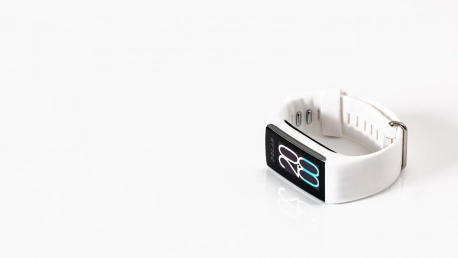Wearable technology is revolutionizing healthcare by facilitating the collection of vast amounts of health data from consumer gadgets. This enables healthcare to be more tailored, improving its efficiency and effectiveness. The integration of continuous data collection with individual health intricacies promises a shift towards more proactive and predictive medical models.Advances in wearable tech are crucial for this progression. Devices are becoming more sophisticated, not just in the scope of data they collect but also in their design, making them more user-friendly and encouraging wider adoption. As these technologies become more ingrained in healthcare, they must navigate a complex regulatory environment that balances innovation with patient privacy and data security.The trajectory of wearable technology in healthcare is shaping a future where the accessibility of real-time health metrics leads to personalized and timely medical interventions. Through the interplay of innovation, thoughtful design, and mindful regulation, we are stepping into an era where technology empowers individuals to take charge of their health and wellness like never before.
The Rise of Real-Time Health Data
The Advent of Wearable Health Technology
The era of fitness trackers and smartwatches has introduced a seismic shift in health data collection. Equipped with an array of sensors, these devices constantly monitor various health metrics, providing not only snapshots of current health status but also trends over time. This continuous data stream offers the tantalizing prospect of healthcare that is proactive and personalized, analyzing individual patterns to predict and avert potential health issues before they become problematic.Wearable technology caters to the niche of preventive medicine by crossing the traditional barriers of healthcare accessibility. Regular check-ups get a new dimension as individuals can now track their vitals in real-time and seek medical advice based on solid, empirical data. The convenience and immediacy of such data collection fortify the individual’s role in managing their health.
From EHR to Consumer Empowerment
Traditionally, electronic health records (EHR) have been the cornerstone of digitized healthcare, centralizing patient information within institutional databases. However, the recent proliferation of consumer health devices signifies a progressive shift – one where individuals are the custodians of their health data. Such empowerment not only blurs the line between patient and health advocate but also stands to disentangle the complexities of healthcare delivery.This transfer of data ownership revolutionizes patient autonomy. No longer passive recipients, individuals now have the power to track, understand, and act upon their health indicators. This shift lays the groundwork for what could be the next epoch in healthcare – an era of personalized, proactive treatment methodologies directly informed by real-time, individual health data.
Valencell’s Pioneering Contributions
Setting the Pace in Biometrics
Valencell stands at the forefront of biometric innovation, providing the foundational technology for precise health measurements within the wearable market. Their sensors have emerged as the bedrock upon which companies design smart devices that are not just functional but medically insightful. Through constant refinement, Valencell’s sensor technology is honing the ability of wearables to provide accurate and meaningful health data.The integration of Valencell’s sensors across numerous consumer products exemplifies the symbiosis between cutting-edge technology and health-focused utility. Their work underscores how precision engineering can transform everyday devices into powerful tools for health self-monitoring, opening new possibilities for disease prevention and lifestyle management.
The Impact of Continuous Monitoring
Continuous health monitoring is disrupting the healthcare paradigm by shifting the focus from episodic treatment to continuous care. This trend allows for a more nuanced understanding of an individual’s health trajectory, enabling interventions that are timely and more attuned to the patient’s specific needs. Valencell’s technology plays a central role in this by providing reliable data that can be acted upon with confidence.Yet, the widespread adoption of continuous monitoring prompts significant considerations, from data security to the potential for over-reliance on self-diagnosis. There is a delicate balance between harnessing the power of continuous data and ensuring it is interpreted within the appropriate medical context. As this technology becomes more pervasive, it is paramount that the healthcare industry adapts to utilize these rich data streams effectively.
The Intersection of Design and Health Outcomes
Designing for Positive Health Behaviors
The influence of design in the realm of wearable technology is powerful and pivotal. Products that are thoughtfully designed with the user’s well-being as a central focus can significantly impact health behavior. Design choices in information display, user interface, and overall user experience play a crucial role in how individuals engage with their health data and, consequently, how they manage their health.It is not merely about collecting data but presenting it in a way that motivates positive behavioral changes and discourages those that are detrimental. A well-designed wearable can act as a nudge in the right direction, compelling users to make healthier choices, almost effortlessly. The overarching design principle that emerges is clear: technology must be an ally in the user’s health journey, guiding yet not overwhelming, informative yet not coercive.
Innovations Shaping Behavior
The importance of design in shaping behavior is illuminated by successful interventions like those by Fitbit, which has popularized the gamification of physical activity. Similarly, Shapa’s numberless scale redefines weight management by focusing on trends rather than exact figures, minimizing discouragement from daily fluctuations. Natural Cycles leverages wearable technology to refine fertility tracking, enhancing both usability and precision for a more seamless integration into daily life.These examples of innovation underscore how critical it is for health technology to be empathetic to user needs. Designing tech solutions that are both intuitive and informative can drive positive health behaviors and equip individuals to take more active roles in their health management. Crafting such solutions requires a nuanced understanding of both technological potential and the human psychological landscape.
Navigating Ethical, Equity, and Regulatory Challenges
The Ethics of Health Data Abundance
As wearable technology becomes more advanced, it amasses vast amounts of health data. This data trove raises serious privacy concerns; our most sensitive health information is potentially vulnerable to exposure. Furthermore, laypeople are increasingly relying on algorithms and AI to make sense of their health data—a risky proposition given their lack of medical expertise.But ethical issues don’t stop at privacy and interpretation. There’s a deep equity problem too. While some benefit from wearable tech, others are left behind, often widening health disparities between different social groups. It’s imperative that we grapple with these ethical quandaries to ensure that technological progress in health wearables is harnessed in a way that is beneficial and fair for all members of society. The promise of wearables is immense, but so is the responsibility to use them wisely.
Regulatory Measures and Responsibilities
Just as healthcare professionals are bound by the Hippocratic oath to ‘First do no harm,’ there’s a compelling case for technological companies to operate within a comparable ethical framework. Regulation is not just about quality control but also about establishing responsibilities in the usage of data and shaping the direction of technology to benefit public health without causing inadvertent harm.The argument for regulatory oversight akin to FDA standards is substantial and warranted. The diligent creation and maintenance of regulatory measures ensure that tech companies abide by ethical constructs, paving the way for innovations that are responsible and aligned with the best interests of public health. The goal is not to stifle innovation but to enable it to flourish within safe and ethical boundaries.
The Human-Centered Approach
In an era where technology pervades healthcare, maintaining a focus on the human element is paramount. The shift toward human-centered healthcare technology prioritizes designs rigorously tested and shaped around informed consent, always integrating human oversight. The advancement of healthcare tech must continuously reflect the needs and intricacies of those it aims to serve, striking a delicate balance between technological sophistication and personal engagement.The ethos of human-centered design is technology that not only fits into the fabric of daily life but also celebrates the diversity of human behavior and cultural perspectives. This approach leads to more relevant technology, ensuring the data gathered is accurate and actionable. By creating solutions attuned to the user, we enable a more meaningful analysis and pave the way for a healthier society—technologically advanced but never disconnected from the human touch it’s designed to enhance.
Pioneering Personalized Health Pathways
The interplay of detailed health metrics and advanced tech is reshaping personalized medicine. As patients gain access to intricate health information, they can better represent their own healthcare interests. In turn, medical professionals can customize care more accurately. The thrust of these developments is at the heart of discussions like those at the RIoT event in North Carolina, spotlighting the fusion of precision health data with tailored tech solutions. This synergy is accelerating the pace of innovation in healthcare, making personalized treatment not just an idea, but an increasingly concrete reality. Through such collaborations and exchanges, the journey toward a more individualized healthcare framework is quickly gaining momentum, promising a future where each patient’s treatment is as unique as their health profile.









